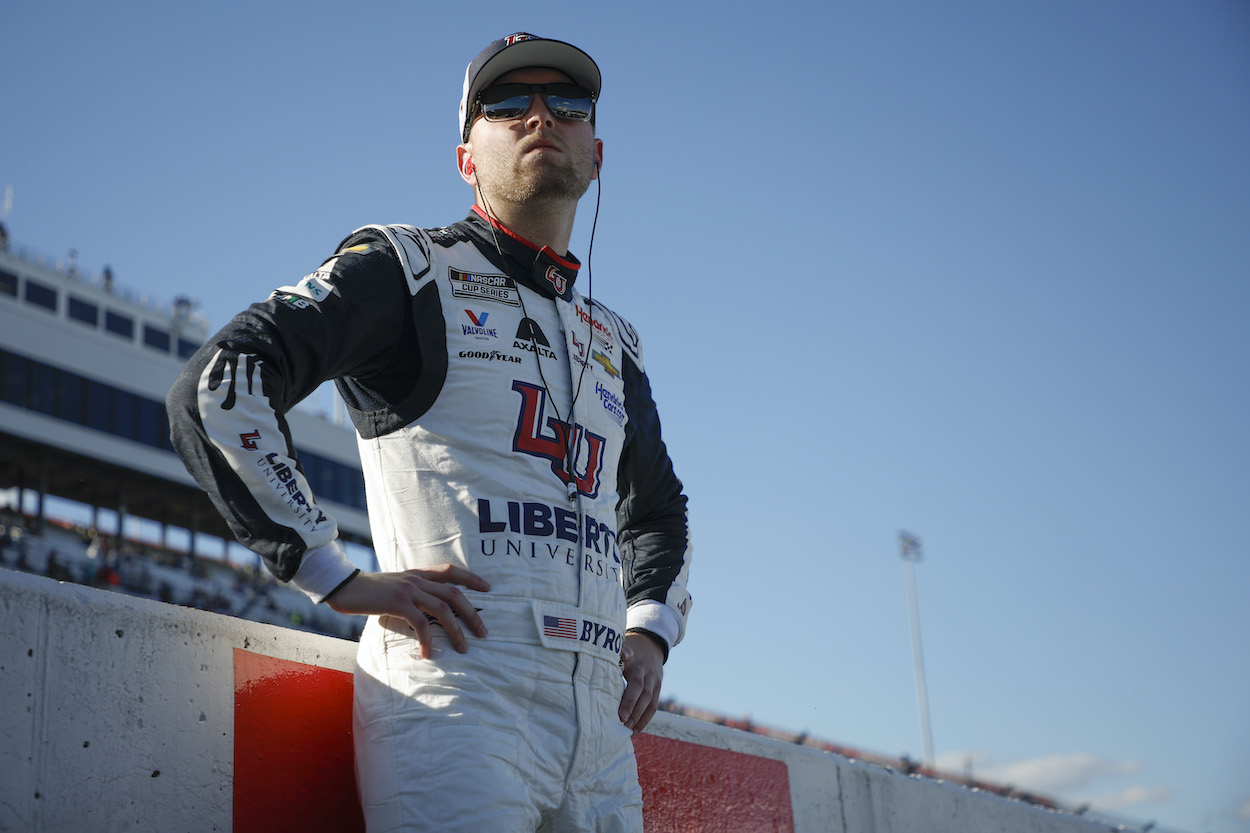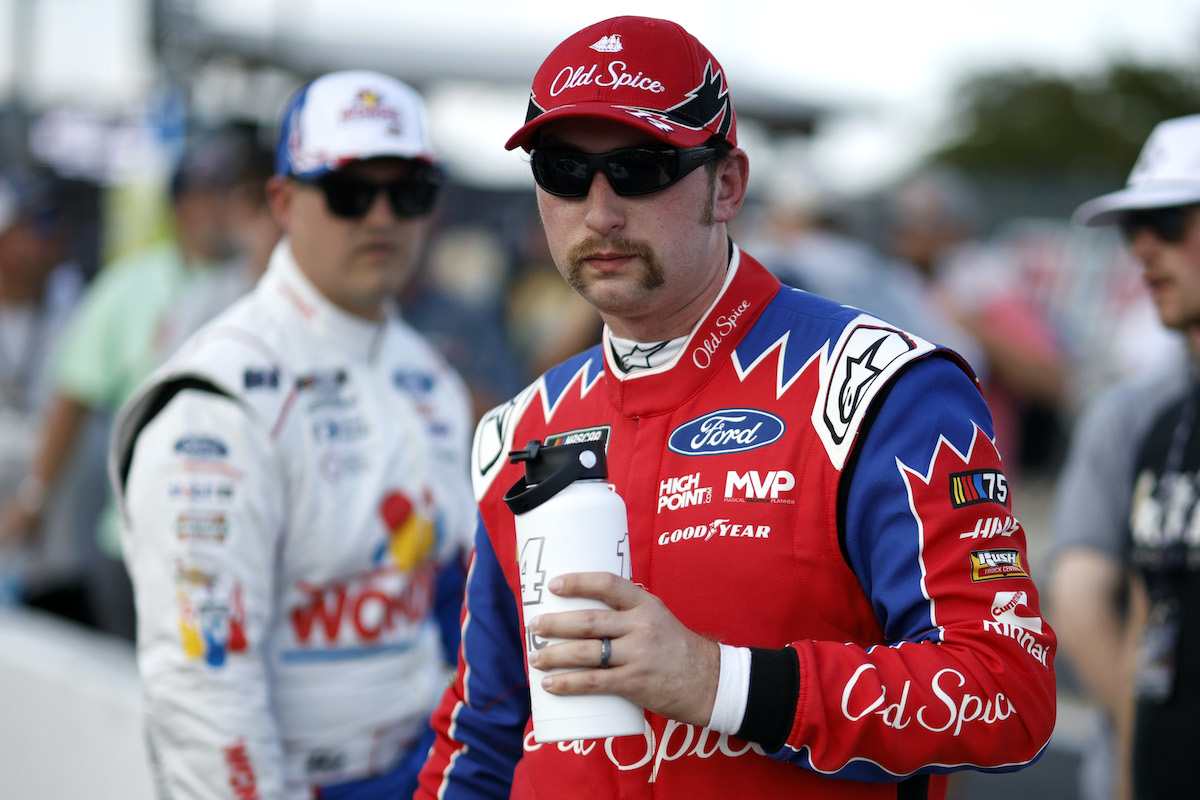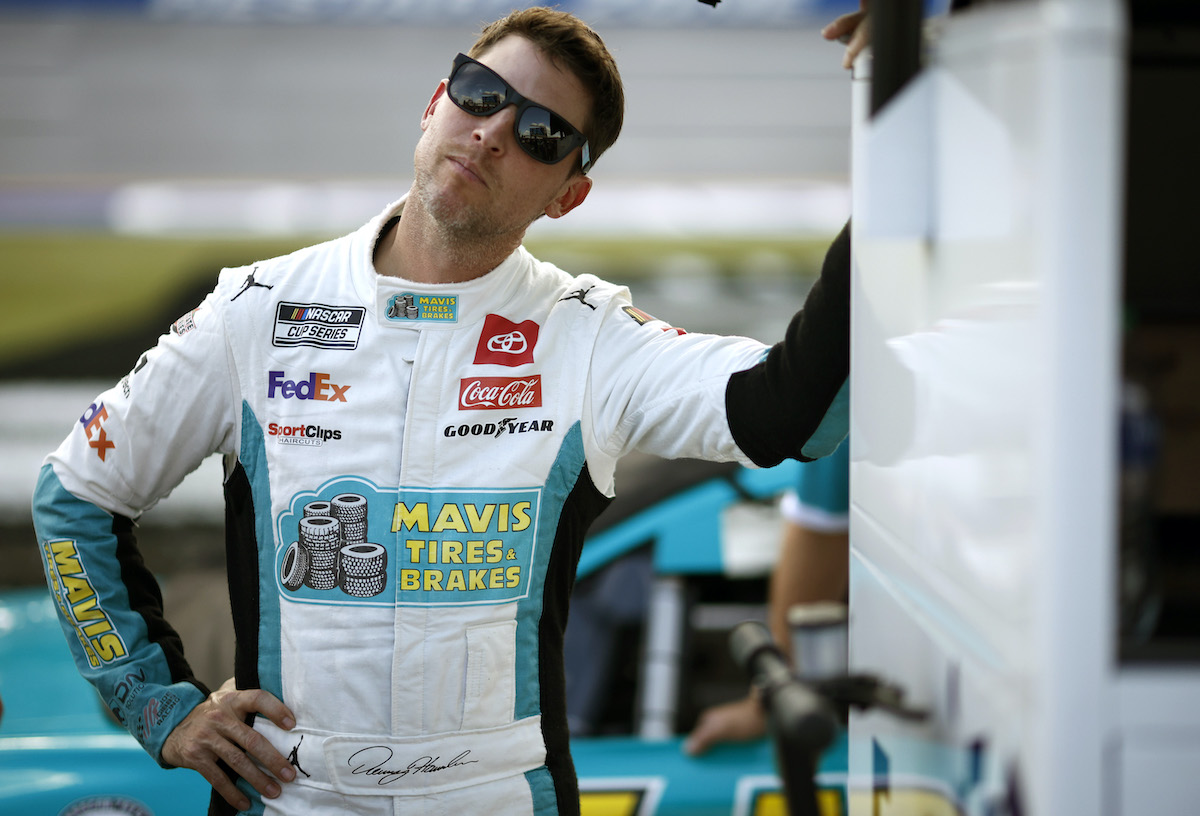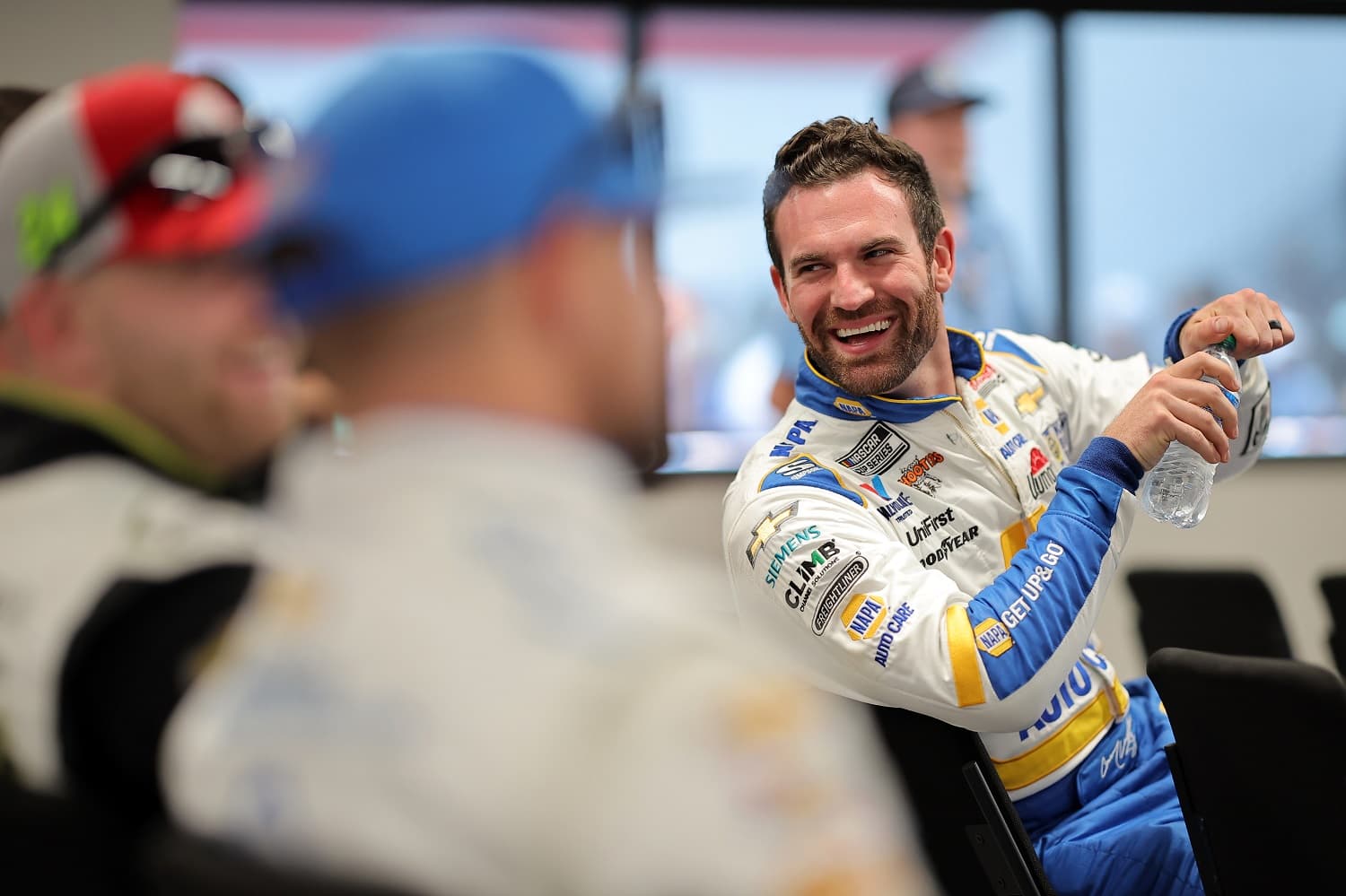
Corey LaJoie’s Observation and an Internet Outage Foreshadow NASCAR’s Future
Corey LaJoie witnessed the future during his brief stint at Hendrick Motorsports. Then, the weekend concluded by the Cup Series reverting to 1998 during the race won by Kyle Busch.
What LaJoie saw during preparations to drive the No. 9 Chevy and the problems the technical glitch caused reflect a NASCAR future of growing disparity between the top teams and the also-rans.
Corey LaJoie’s big day was a bust
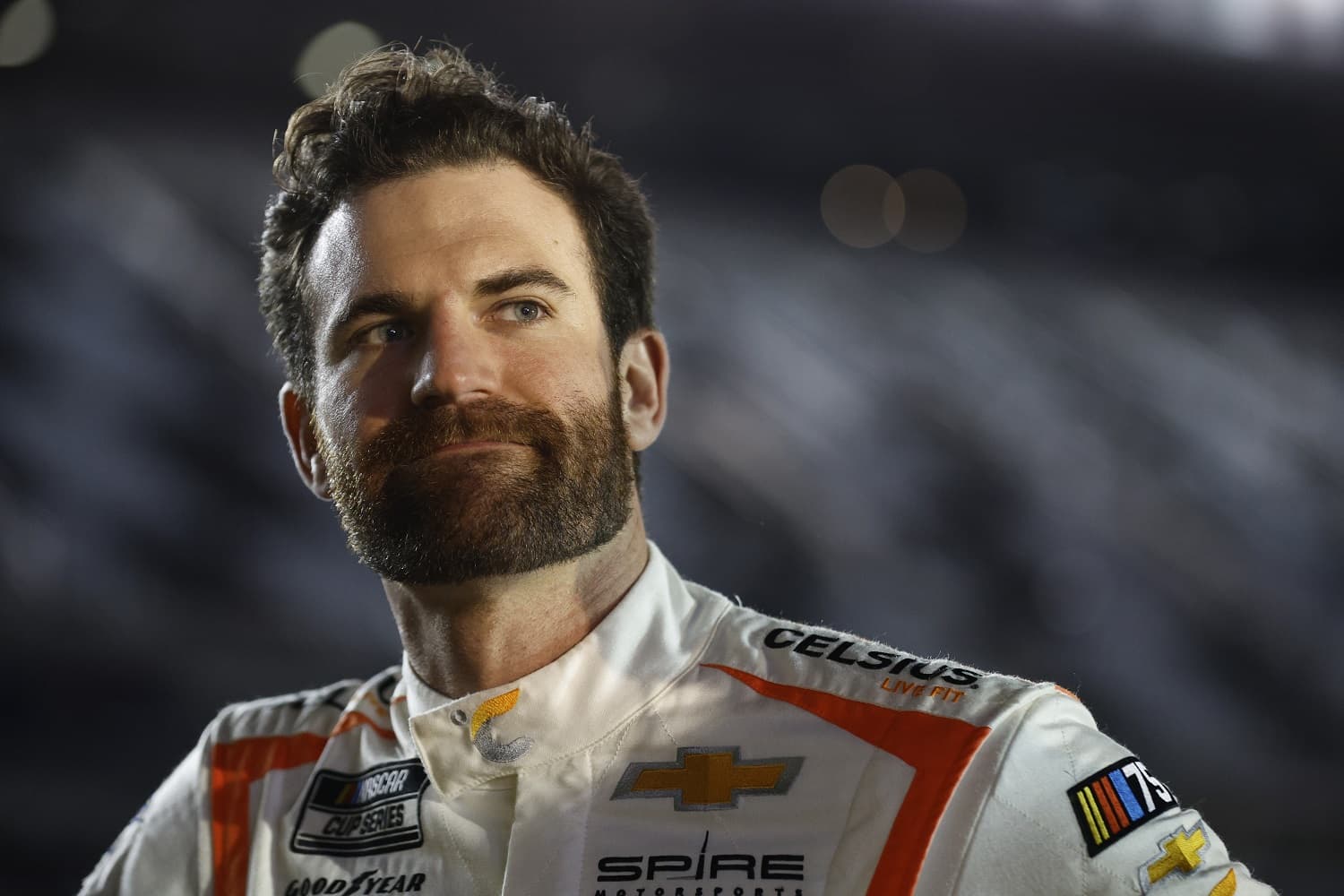
Though some overhyped it as a potential stepping stone for a move to a better ride, Corey LaJoie driving for Hendrick Motorsports at World Wide Technology Raceway was never anything more than a one-off. HMS needed a fill-in while Chase Elliott served his suspension, and Josh Berry was on the other side of the country for the Xfinity Series race.
The premise of the hype was that LaJoie, enjoying a solid year at Spire Motorsports, would finally get to drive a superior car backed by the resources of the most successful organization in the history of the NASCAR Cup Series.
Well, that didn’t pan out. He accidentally hit the kill switch to start the race and spent the first 90 laps outrun by Carson Hocevar, making his Cup debut in LaJoie’s usual car. LaJoie finished 21st and dropped two spots in the season points standings.
The week leading up to the race taught the driver a few things, and a mid-race glitch taught us all something about the future of NASCAR, namely that the sport is likely to return to the pre-Next Gen era in which there was an expanding gulf between haves and the have-nots.
Corey LaJoie marveled at what he saw at Hendrick Motorsports
The 2022 arrival of the Next Gen car brought undeniable parity to the NASCAR Cup Series. By season’s end, Chase Elliott was the only five-time winner (Kyle Larson won twice as many in 2021), and 18 other drivers scored victories. It was partly a function of the data teams compiled in previous seasons being less applicable to the new car.
That new knowledge base grows as teams make their third and fourth trips to tracks. For Hendrick Motorsports, Joe Gibbs Racing, and Stewart-Haas Racing, that means 16 cars worth of data for Daytona, Phoenix, Martinsville, and other twice-a-year-tracks. Smaller teams can acquire some helpful shared data from their manufacturer partners, but it’s not the same as mapping data against how the crew chief prepped the car and made in-race adjustments.
Additionally, the big teams continue to out-think their little brothers, not necessarily by being smarter but rather by throwing more bodies at tasks.
“The depth of people, collective focus of the goal, and the mission is noticeable and evident,” LaJoie told reporters about his time spent in the HMS shop. “It’s a different world.”
Realistically, it’s no different than 2021. The resources of the big teams will win out over the likes of Spire Motorsports, Kaulig Racing, and most of the other two-car teams. Richard Childress Racing may keep pace thanks to Kyle Busch, but it’s conceivable 2022 darling Trackhouse Racing could go winless this year.
That fuels the speculation Trackhouse will be the next team to push hard for a third full-time car once the next contract between owners and NASCAR is finalized. Others likely have similar ambitions, and smaller will not be better five years from now.
The technical glitch at WWT Raceway mattered
Right about the time Carson Hocevar was wrecking in Corey LaJoie’s No. 7 Chevy because of an exploded brake rotor, the FS1 feed froze, and the network flipped over to video of a thoroughbred race and then to its studio hosts. The issue was an interruption to internet service at World Wide Technology Raceway, and Fox returned to race coverage quickly.
However, the teams were running in the figurative dark for nearly two-thirds of the race. That’s because the feeds for lap times and Sports Media Technology data never returned. SMT is crucial to teams because it provides live telemetry, speed, gears, throttle, and braking information.
All the teams track the information onsite, but many now rely upon staff back at the shop to crunch the data more extensively, even comparing the readings to previous races at the same track to provide the crew chief with more insight.
Suddenly, that information pipeline screeched to a halt like it was 1998 and millions of Americans devoured bandwidth at once to read the Starr Report. For 90 minutes, the outage was the great NASCAR equalizer, restoring some of the parity the Next Gen car brought last season.
However, the little guys can’t count on more outages to level the playing field as time goes on, and the better-financed teams will resume widening the gap. Forget artificial intelligence. It’s knowledge in general that will continue to drive success.
Got a question or observation about racing? Sportscasting’s John Moriello does a mailbag column each Friday. Write to him at JohnM@Sportscasting.com.
